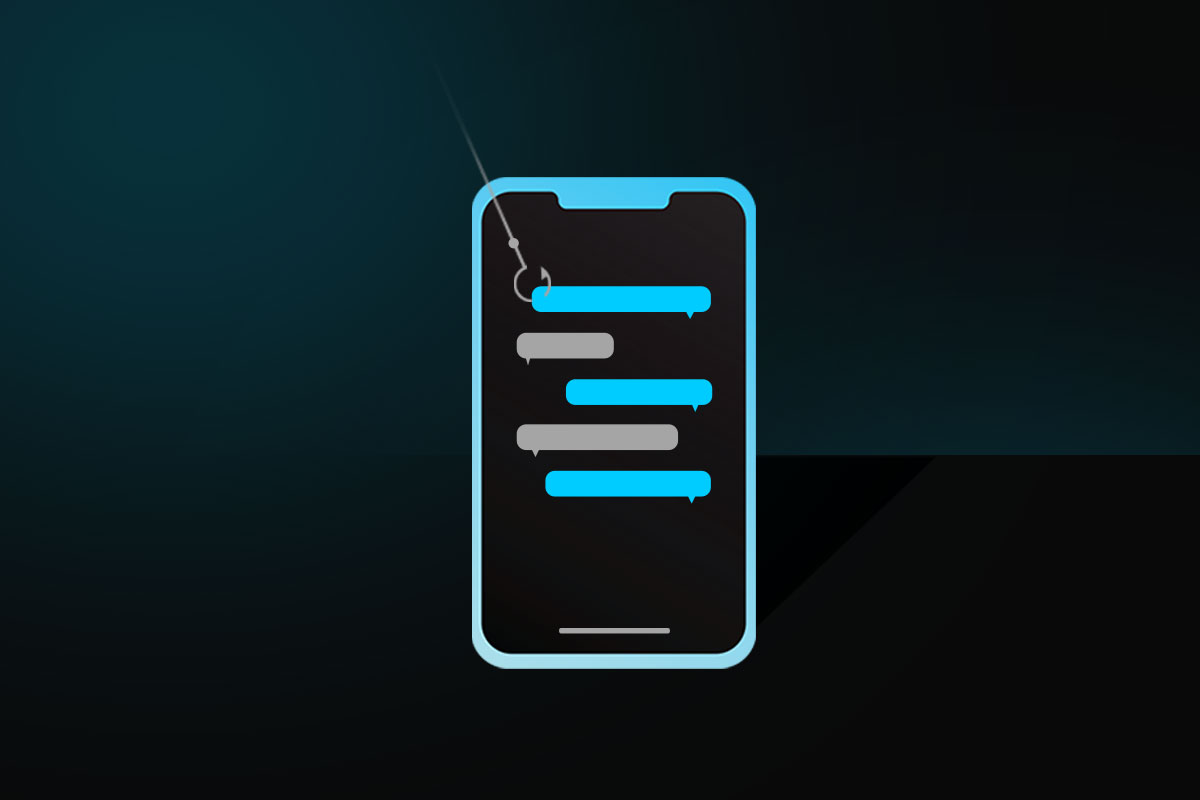
Smishing is a type of cyber attack that attempts to trick individuals into giving away sensitive information via text message. Short for “SMS phishing,” this form of attack is an increasingly common threat for businesses of all sizes. To successfully avoid smishing attacks, employees must be able to identify and report suspicious messages before your data is compromised.
How Smishing Attacks Work
Smishing attacks take the form of text messages that appear to come from a reputable source, such as a bank, government agency, or retailer. In a business scenario, the SMS may look like it was sent by a member of your senior leadership team, or a trusted external vendor. The messages involved are designed to appear legitimate, making them difficult for employees to identify.
A smishing message typically asks the recipient to click on a link or call a number to update their account information. If the recipient complies with the message’s request, the attacker can then use the information provided to steal business data or drain your accounts.
How to Spot a Smishing Attack
Smishing attacks become more sophisticated by the day, meaning employees must be on high alert to suspicious activity. Ensure your team members are trained to spot the following smishing red flags.
1. Suspicious Sender
In many smishing messages, the contact details will appear legitimate at first glance. Encourage employees to double check the sender’s phone number and details before responding, especially if the message claims to be from the CEO, a senior manager, or vendor.
2. Urgency
If the message requests immediate action and creates a sense of urgency, it should be treated with caution. Smishing attacks often take the form of a last minute request to update account information or payment details before a certain deadline.
3. Sensitive Information Request
Smishing messages typically ask for sensitive information, such as passwords, bank account numbers, or credit card details. Remind employees that legitimate requests for this type of information will never be sent via SMS, and such messages should be reported and ignored.
4. Incorrect Grammar and Spelling
Poor grammar and spelling errors are a common hallmark of scam messages. Employees should also be on the lookout for questionable formatting and unusual links, e.g. goog.le.com versus google.com.
5. Requests to Click on a Link
Most smishing messages will ask the recipient to click on a link, which then either installs malware on the device, or takes the employee to a phishing website. This may look very similar to the real website for a bank, for example, but the corresponding forms are used to steal sensitive details.
6. Requests to Call a Number
A smishing message may ask employees to call a phone number in an attempt to appear more legitimate than a link. However, this could connect the employee to a scammer. Encourage employees to only communicate with known contacts via saved details they have on file.
Protect Your Business From Smishing Attacks
In addition to promoting employee awareness of smishing attacks, businesses should also consider the following protective measures to reduce the risk of a breach.
1. Mobile Device Management (MDM)
Mobile Device Management (MDM) can help you secure your company’s devices and protect against smishing attacks. The right MDM solution can monitor incoming messages for suspicious activity, block malicious content, and prevent employees from accessing unauthorized websites or downloading malicious apps.
2. Two-Factor Authentication
Two-factor authentication is an additional layer of security that requires employees to provide two forms of authentication in order to access their accounts. This can help prevent smishing attacks by making it more difficult for attackers to access sensitive information.
3. Antivirus Software
Antivirus can help protect your business against smishing attacks by detecting and removing malicious software. Install a reputable antivirus solution on company devices and ensure it is up to date at all times to keep your data and business secure.
Don’t Fall Victim to Smishing Attacks
Smishing attacks are a growing threat, and they can have serious consequences if they are successful. To protect your business, it’s important to educate your employees about the risks and implement robust security solutions. Most importantly, if you receive a suspicious message, avoid interacting with the content and flag it to your IT or security team immediately.



